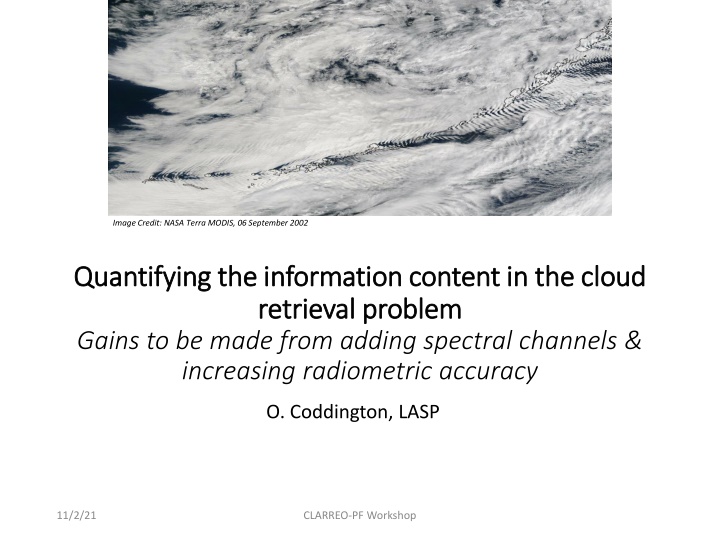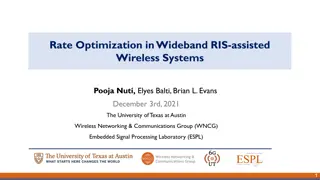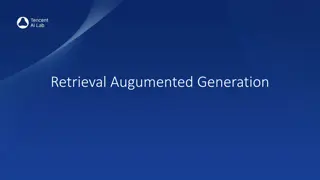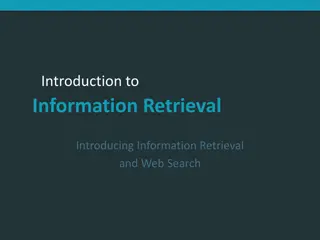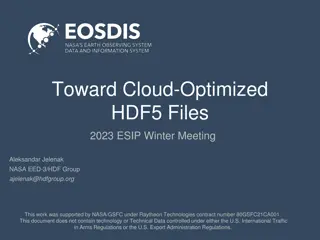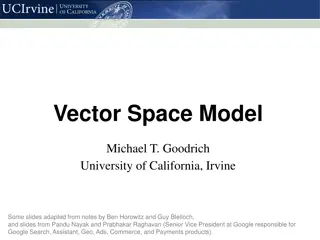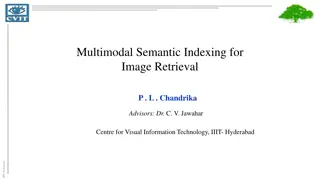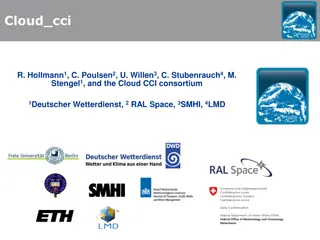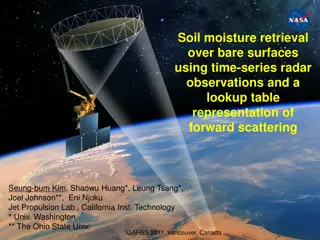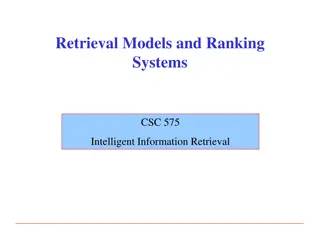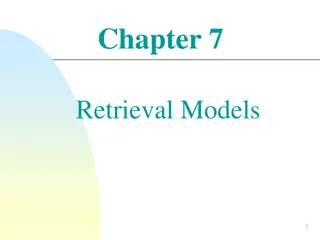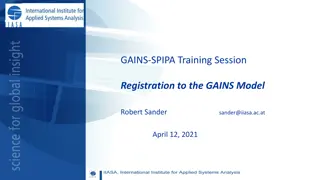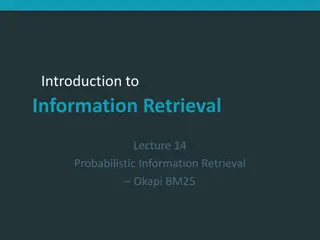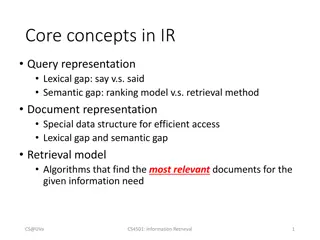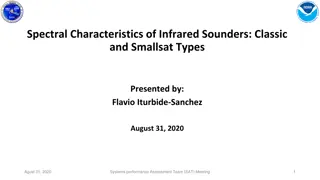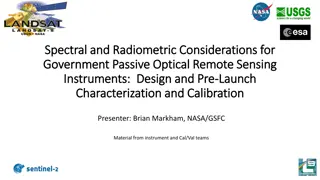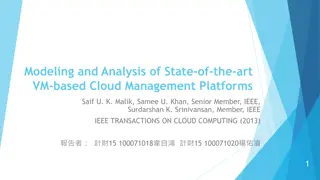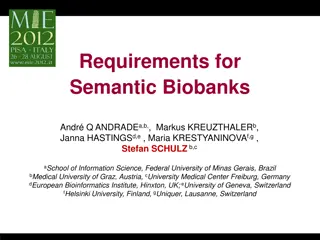Quantifying Information Content in Cloud Retrieval: Gains from Adding Spectral Channels
This content discusses the quantification of information content in cloud retrieval problems and the benefits of incorporating additional spectral channels and enhancing radiometric accuracy. It emphasizes the importance of these enhancements in improving data analysis and decision-making processes related to cloud studies.
Download Presentation

Please find below an Image/Link to download the presentation.
The content on the website is provided AS IS for your information and personal use only. It may not be sold, licensed, or shared on other websites without obtaining consent from the author.If you encounter any issues during the download, it is possible that the publisher has removed the file from their server.
You are allowed to download the files provided on this website for personal or commercial use, subject to the condition that they are used lawfully. All files are the property of their respective owners.
The content on the website is provided AS IS for your information and personal use only. It may not be sold, licensed, or shared on other websites without obtaining consent from the author.
E N D
Presentation Transcript
Image Credit: NASA Terra MODIS, 06 September 2002 Quantifying the information content in the cloud Quantifying the information content in the cloud retrieval problem retrieval problem Gains to be made from adding spectral channels & increasing radiometric accuracy O. Coddington, LASP 11/2/21 CLARREO-PF Workshop
Shortwave Cloud Optical Property Retrievals Most current cloud optical property retrievals are based on finding the best fit of measured spectral reflectance (or reflected radiance, transmittance, etc.) with simulated radiative transfer lookup tables (e.g Twomey & Cocks, 1989) (Nakajima & King, 1990) 11/2/21 CLARREO-PF Workshop
The Information Content Role in Retrieval Problems Remote measurements with high spectral resolution would appear to contain a large amount of information about the atmosphere (C. Rodgers, 1998). Information content is a mathematical theory of the information gained by making a measurement. It aids us to use spectral information efficiently and effectively (with scalar values). Shannon Information Content (Shannon and Weaver, 1949) Quantify the total information. Mutual information content (Cover and Thomas, 2006) Quantify the shared information between physical parameters. 11/2/21 CLARREO-PF Workshop
Overview: Statistical Inverse Problems y = f(x;b)+e (Rodgers, 2000) The inverse problem Bayes Theorem Alternative representation of the general inverse problem. Key difference: The measurement, and model information sources are not treated as separate PDFs. y = measurement f = forward model x = parameters of interest b = non-retrieved parameters = random measurement noise Requires: y, f(x) and x be treated as stochastic variables Assumptions Required The general inverse problem Optimal Estimation Solution (Tarantola, 2005) (Rodgers, 2000) p(x,y) =1 gp2(x)p2(y)p1(f(x)| x) A priori PDF PDF Analytic Solution to Bayes Theorem. Three assumptions: 1.The forward model is linear. 2.Measurement noise is Gaussian. 3.A priori information is Gaussian. Model PDF Measurement Posterior PDF GENRA is a method that uses general inverse theory to characterize retrievals made using a least squares minimization technique.
More Wavelengths Add Information Adding information from six wavelengths consecutively narrows the PDFs of effective radius and optical thickness. At the same time, the Shannon information with respect to these parameters increases. Shannon information is a function of retrieval precision. Information content analysis of the Twomey & Cocks, 1989 retrieval statistic. Knowledge gain (Coddington et al., 2012) 11/2/21 CLARREO-PF Workshop
From a handful of wavelengths to many hundreds.... Normalized Information Content of Hyperspectral Cloud Data Normalized Information Content of Hyperspectral Cloud Data Cloud Optical Thickness Droplet Effective Radius Wavelength Wavelength (Coddington et al., 2012) 11/2/21 CLARREO-PF Workshop
Information Content quantifies things we know we understand.... 1. Droplet absorption increases with particle size and is negligible at visible wavelengths. 2. Droplet extinction also depends upon particle size (an inverse dependency). 3. At visible and very near-infrared wavelengths cloud absorption is very small and the signal reflected from cloud top will be mainly influenced by optical thickness. 4. At near-infrared wavelengths, there is a strong dependence on absorption (i.e. particle size). (Coddington et al., 2012) 11/2/21 CLARREO-PF Workshop
Information content can be used to visualize retrieval (in)dependencies Mutual information content: a measure of how parameters share the information of a measurement. Increasing dependence of the parameters (mutual information > 0). Mutual information: 1. is a scalar quantity, irrespective of # of retrieval wavelength 2. is equal to zero, when parameters are independent 3. a potential useful tool for hyperspectral retrieval development & evaluation (Coddington et al., 2017) 11/2/21 CLARREO-PF Workshop
And Increased Radiometric Accuracy Also Adds Information Cloud Detection over Ice True color image: visible bands False color image: visible and infrared bands Images courtesy of NASA, based on MODIS data Uncertainty in model input parameters, such as variations in snow surface albedo, induce variability in simulated cloud radiance that impacts retrieval precision and accuracy. 11/2/21 CLARREO-PF Workshop
Information Content as a Retrieval Characterization Tool Aerosols above cloud can induce a cloud retrieval bias (Haywood et al., 2004) Effective radius ( m) 5 10 15 20 25 30 Retrievals from aircraft obs. & comparisons to satellite provided evidence (Coddington et al., 2010) + increasing re Experimental Setup. increasing Albedo 1625 nm 20 40 60 80 100 Cloud optical depth Aerosol Layer Effective radius ( m) 2 6 10 14 18 Albedo 850 nm + Cloud Layer 5 10 15 20 25 30 Cloud optical depth (Vukicevic et al., 2010) 11/2/21 CLARREO-PF Workshop
The Information Content Role in Retrieval Problems Information content quantifies things we know as evidenced by: Mirroring known physical basis of cloud retrievals Reproducing retrieval biases (aerosol over cloud) Information content provides insight into hyperspectral retrieval development: The total and shared information of retrieval parameters Assigning wavelength-dependent weightings. Visualizing dependencies in retrieval parameters dependencies There is enhanced information in remote measurements with high spectral resolution & with high accuracy as evidenced by: Full spectrum (300-2500 nm) information content in cloud properties Narrowing of joint PDF with additional retrieval wavelengths Enhanced information content with reduced uncertainty *In other recent and ongoing work (not discussed today), I have also been applying information content to shortwave thermodynamic phase discrimination [PI: Kerry Meyer] 11/2/21 CLARREO-PF Workshop
